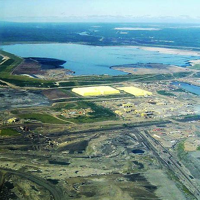Recent Iranian saber rattling about closing the Strait of Hormuz is yet another reason for the U.S. to look north to Canada for oil imports. Military confrontation or a perceived threat of it in the strait -- the route for almost 17 million barrels of oil daily -- would wreak havoc on global oil supplies. The effects for the United States would be particularly severe: 75 percent of oil from Saudi Arabia, which at 12 percent of net U.S. imports of crude oil and petroleum products is our second-largest supplier, passes through this strategic waterway.
Occasional threats to global oil supply are one reason why U.S. energy security requires “an all-out, all-of-the-above strategy,” as President Barack Obama put it in his 2012 State of the Union address. Though this strategy must include cleaner natural gas, as well as alternative energy sources, the U.S. will continue to depend on oil to satisfy its energy needs in the short-to-medium term.
Here, Canada, which at 25 percent is already the United States’ top source of net oil imports, can play an even-greater role in maintaining the stability of the U.S. energy picture. With 175 billion barrels, the province of Alberta is home to the world’s third-largest oil reserves, behind Saudi Arabia at 260 billion barrels and Venezuela at 211 billion -- and it is right in the U.S. backyard.

